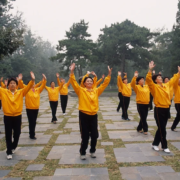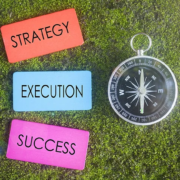Navigating the Leader’s Tribe Quest
“Some people will hear you louder in silence. Those are your tribe – they’ll get you through the tough days and give you something to laugh about on the ride.” Nikki Rowe
As a career development and mental fitness coach, the common theme expressed by my clients has been “tribe related”. During and since the pandemic, many of us have spent a lot of time reevaluating our values and being more intentional about whom we spend time with and where and how we want to direct our energies.
The interesting phenomenon and theme are that folx, of all ages, say they are struggling to find their “tribe”, their “peeps”, their “people”. And many of us are on a mission to make new friends, build new relationships, and connect with others that share our values, interests, and goals. I have been part of this quest to find my tribe as well.
Finding our “tribe(s)” extends beyond our personal world, it is also important to have them in our working and professional lives. As leaders or emerging leaders, it is critically important to find those that we can consider our “Board of Directors”, wise counsel, champions, truth-tellers, allies, sounding boards, fellow commiserators; and in essence, our professional tribe.
So, let’s delve into the significance and value of having a “tribe”. This quest will help you increase your leadership tool belt and will ultimately enhance your professional journey.
So, on a scale of 1- 10, how aware of you of the significance of finding a tribe as a leader? 10 being very aware and 1 being not aware at all.
“In a CEOWorldMagazine article, it notes that the modern high-performing leader is one who understands the power of a work tribe as a vehicle to create great change and with velocity.”
The author shares a fundamental difference between two interesting groups: locusts and geese. She asks you, as a leader, are you a locust or a goose? I know that may sound like an odd question but after reading what may appear to be similar behaviors with each group there really are some profound differences. Here is what it said:
“When they travel to find new food sources, locusts migrate in a swarm and geese soar in a streamlined V-shape formation. To an outsider, it looks as if both the locusts and geese are moving as a tribe, with a common purpose and vision. But don’t be mistaken, these are two very different experiences!
Researchers have shown that the mass migration of locusts, in vast swarms, is driven by cannibalism and sustained by fear. Locust swarms are formed because they are desperate to stay a step ahead of their cannibalistic fellow locusts. The individual locust that fails to continue moving forward is likely to be attacked and risks becoming a source of food for others in the swarm. Yes, you fear that your fellow locust will eat you alive if you do not continue to follow the rules and move forward!
Geese, on the other hand, fly in a V-shape formation, which enhances communication and coordination. Because of this, these birds beat their wings less often and conserve energy on a long and difficult journey. Also, to keep things fair, geese take turns being in the front, with each bird moving to the back when they get tired.
Like the geese, when you soar with your work tribe, they will support you when the winds change direction in your life. They will fly in a V formation with you and allow you to fly higher, faster, and further than you ever could on your own. They allow you to rest and recuperate when you need a break, and to step up and to take your place to lead when it is your time. Your journey to where you are going is much easier.”
What has been your experience within your organization and team? Do you feel as though you are a locust just trying to survive and stay alive or are you part of a gaggle of geese working in formation for a common cause with a shared purpose?
This example illustrates that you can have a tribe but is the tribe you are part of serving you and fueling you and others to grow? Let’s explore four areas a professional tribe offers you as a professional.
First and foremost, your tribe can provide you with the support and encouragement that you need. As a leader, it is often a lonely place and filled with challenges and unknowns. Who are those folx that will keep you grounded and “gumby-like”?
In 2016, I attended a coaching conference in Boston through the IOC (Institute of Coaching) and met a fellow coach Lupe Wood. She and I became fast friends and decided we were going to be peer coaches to one another. We have coached each other since then regarding our personal and professional goals. We have been meeting virtually since 2016 and have built an amazing relationship. Over the years we have asked other fellow coaches to join our group and created a tribe. Our “tribe” meets monthly, and we call ourselves the Coaches Circle. It has been an amazing form of support!
Your tribe will also offer a variety of perspectives and the opportunity to open your lenses to diverse thoughts, opinions, and people.
Our coaching circle has coaches from all different backgrounds, walks of life, personal and life experiences, professional specialties as well as varied coaching practices. Within this network of coaches, I have enlarged and expanded my thinking and perspectives. It has allowed each of us to burst with innovative ideas and approaches. We have taken our coaching practices and business to new heights.
Another value add is that a tribe allows you to make connections with like-minded people which affords you networking opportunities. It enlarges your networking community and opens those who you can support and can support you.
I cannot tell you how often, over the last seven years, the number of connections we helped to bridge for one another. As a matter of fact, one of my foundational coaching frameworks focused on increasing your mental fitness muscles through the program Positive Intelligence was introduced to me two years ago through my coaching circle.
Another key area that having a professional tribe creates is accountability. Yes, accountability. Research has shown clearly that having accountability partners who are invested in the work that you are doing and the goals that you have set, increases your chances of successful goal attainment. Your tribe can activate and ignite your inspiration as motivation wanes and needs constant refueling.
So, holding each other accountable to our goals and offering the type of support each one of us needs is pivotal.
In summation, you are not alone if you have been in search of finding your tribe. You are in very good company. People of all ages are in search of like-minded people who can inspire them to live and work and create the changes they want in their lives.
As noted, finding your personal tribe as well as your professional tribe is crucial for the soul and completely worth the effort. Your professional tribe can be a source of support and encouragement. They can offer a diversity of viewpoints and perspectives. They can help expand your networking connections and will be your accountability partners.
When we have others to help us along the way it makes the journey fun and doable.
Reach out if you are looking for ways to navigate and find your tribe. I would love to help.
“If you want to go quickly, go alone. If you want to go far, go together.” African Proverb













